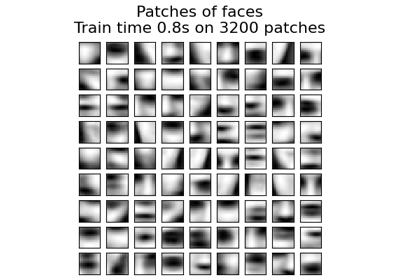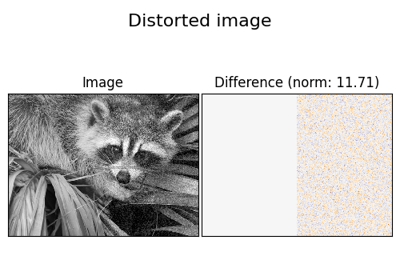extract_patches_2d#
- sklearn.feature_extraction.image.extract_patches_2d(image, patch_size, *, max_patches=None, random_state=None)#
将2D图像重塑为补丁集合。
结果补丁在专用数组中分配。
更多信息请参阅 用户指南 。
- Parameters:
- imagendarray of shape (image_height, image_width) 或 (image_height, image_width, n_channels)
原始图像数据。对于彩色图像,最后一个维度指定通道:RGB图像将有
n_channels=3。- patch_size整数元组 (patch_height, patch_width)
一个补丁的尺寸。
- max_patches整数或浮点数, 默认=None
要提取的最大补丁数。如果
max_patches是0到1之间的浮点数,则被视为总补丁数的比例。如果max_patches为None,则对应于可以提取的总补丁数。- random_state整数, RandomState实例, 默认=None
确定用于随机抽样的随机数生成器,当
max_patches不为None时。使用整数使随机性确定。 参见 术语表 。
- Returns:
- patches形状为 (n_patches, patch_height, patch_width) 或 (n_patches, patch_height, patch_width, n_channels) 的数组
从图像中提取的补丁集合,其中
n_patches要么是max_patches,要么是可以提取的总补丁数。
Examples
>>> from sklearn.datasets import load_sample_image >>> from sklearn.feature_extraction import image >>> # 使用此数据集中第一张图像的数组数据: >>> one_image = load_sample_image("china.jpg") >>> print('Image shape: {}'.format(one_image.shape)) Image shape: (427, 640, 3) >>> patches = image.extract_patches_2d(one_image, (2, 2)) >>> print('Patches shape: {}'.format(patches.shape)) Patches shape: (272214, 2, 2, 3) >>> # 这里只是其中的两个补丁: >>> print(patches[1]) [[[174 201 231] [174 201 231]] [[173 200 230] [173 200 230]]] >>> print(patches[800]) [[[187 214 243] [188 215 244]] [[187 214 243] [188 215 244]]]


